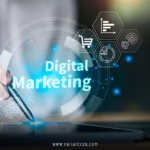Customer acquisition strategies are the lifeblood of any growing business. Whether you’re running a startup or scaling an established company, finding new customers is like planting seeds for future success. But how do you attract the right people without burning through your budget or chasing dead ends? In this article, I’ll walk you through actionable, creative, and budget-friendly customer acquisition strategies that can help you build a loyal customer base. With a conversational tone and insights grounded in real-world experience, we’ll explore how to connect with your audience, stand out in a crowded market, and keep those customers coming back for more.
Why Customer Acquisition Strategies Matter
Imagine your business as a bustling café. You’ve got great coffee, cozy vibes, and a killer menu, but if no one walks through the door, it’s all for nothing. That’s where customer acquisition strategies come in—they’re the neon sign that draws people in. These strategies aren’t just about getting bodies through the door; they’re about attracting the right customers who’ll love what you offer and spread the word.
Effective customer acquisition strategies help you:
- Build brand awareness in a noisy digital world.
- Convert curious visitors into loyal buyers.
- Maximize your marketing budget for better ROI.
- Create sustainable growth instead of one-off wins.
Ready to dive into the tactics? Let’s break down some of the most effective customer acquisition strategies you can start using today.
Understanding Your Audience: The Foundation of Customer Acquisition
Know Your Ideal Customer Like Your Best Friend
Before you spend a dime on ads or campaigns, you need to know who you’re targeting. Picture your ideal customer: What keeps them up at night? What do they value? Are they scrolling Instagram for inspiration or searching Google for solutions? Understanding their pain points, preferences, and behaviors is the cornerstone of successful customer acquisition strategies.
Create a buyer persona—a detailed profile of your target customer. Include demographics (age, location, income), psychographics (interests, values), and behaviors (where they shop, what they read). For example, if you’re selling eco-friendly products, your persona might be a 30-something urban professional who shops at farmers’ markets and follows sustainability blogs.
Use Data to Sharpen Your Aim
Data is your secret weapon. Tools like Google Analytics can show you where your website visitors come from, what they click on, and why they leave. Social media insights reveal which posts resonate most. By analyzing this data, you can tailor your customer acquisition strategies to focus on what works. For instance, if your data shows that most of your conversions come from Instagram Stories, double down on that channel with engaging, authentic content.
Digital Customer Acquisition Strategies
Leverage Content Marketing to Attract and Engage
Content marketing is like hosting a party where everyone wants to stay. By creating valuable, relevant content, you draw in potential customers without hard-selling. Blog posts, videos, infographics, and podcasts are all tools in your customer acquisition strategies toolkit. For example, a fitness brand might publish a blog series on “10-Minute Workouts for Busy Parents” to attract health-conscious moms and dads.
To make content marketing work:
- Write for humans, not just search engines. Use conversational language and answer real questions.
- Optimize for SEO with keywords like “customer acquisition strategies” in titles, headings, and body text.
- Share your content on platforms where your audience hangs out, like LinkedIn or Pinterest.
Pro tip: Evergreen content—posts that stay relevant over time—keeps driving traffic long after you hit “publish.”
Master Social Media Advertising
Social media ads are a powerhouse for customer acquisition strategies. Platforms like Facebook and Instagram let you hyper-target your audience based on interests, behaviors, and even life events. Want to reach newlyweds looking for home decor? You can. Want to target small business owners? Done.
To nail social media ads:
- Use eye-catching visuals and compelling copy. A bold image paired with “Ready to transform your mornings?” grabs attention.
- Test different ad formats—carousel ads, video ads, or stories—to see what resonates.
- Set clear goals, like driving sign-ups or purchases, and track your results with pixel tracking.
Email Marketing: Your Direct Line to Customers
Email isn’t dead—it’s thriving. In fact, email marketing boasts an average ROI of $42 for every $1 spent. It’s one of the most personal customer acquisition strategies because it lands directly in your audience’s inbox. Start by offering a lead magnet, like a free eBook or discount code, to capture email addresses. Then, nurture those leads with a welcome series that builds trust and showcases your value.
For example, a skincare brand might send a series of emails explaining how to build a skincare routine, subtly introducing their products. Keep your emails short, engaging, and action-oriented with clear calls-to-action like “Shop Now” or “Learn More.”
Offline Customer Acquisition Strategies
Network Like a Pro at Events
Don’t sleep on offline strategies. Industry conferences, trade shows, and local meetups are goldmines for connecting with potential customers. Handing out business cards or hosting a booth can spark conversations that turn into sales. To make events part of your customer acquisition strategies:
- Prepare an elevator pitch that sums up your value in 30 seconds.
- Offer something tangible, like a free sample or exclusive discount, to attendees.
- Follow up with contacts post-event to keep the momentum going.
Partner with Local Businesses
Teaming up with complementary businesses can amplify your reach. For instance, a gym could partner with a local smoothie shop to offer joint promotions. These partnerships work because they tap into an existing customer base that already trusts the other business. It’s like borrowing someone else’s megaphone to shout about your brand.
Referral and Word-of-Mouth Strategies
Turn Customers into Advocates
Happy customers are your best marketers. Referral programs incentivize them to spread the word. Dropbox, for example, grew exponentially by offering extra storage for every friend a user referred. To create a referral program as part of your customer acquisition strategies:
- Offer rewards both parties will love, like discounts or exclusive perks.
- Make it easy to share with referral links or codes.
- Promote the program through email, social media, and your website.
Encourage User-Generated Content
User-generated content (UGC) is like word-of-mouth on steroids. When customers post about your brand on social media, it’s authentic and persuasive. Encourage UGC by creating a branded hashtag or running a contest. For example, a coffee shop might ask customers to share their latte art with #BrewedWithLove for a chance to win a gift card. This not only engages existing customers but also attracts new ones who see the buzz.
Optimizing Your Website for Conversions
Make Your Website a Conversion Machine
Your website is your digital storefront, and it needs to convert visitors into customers. Customer acquisition strategies for your website include:
- Clear CTAs: Use buttons like “Get Started” or “Buy Now” that stand out.
- Fast Load Times: A slow site drives people away. Use tools like Google PageSpeed Insights to optimize.
- Mobile Optimization: Over half of web traffic is mobile, so ensure your site looks great on phones.
Use Landing Pages for Targeted Campaigns
Dedicated landing pages are like laser-focused salespeople. Create one for each campaign—whether it’s promoting a new product or capturing webinar sign-ups. Keep the design clean, the message clear, and the form simple. For example, a landing page for a free trial might highlight benefits, include a testimonial, and have a single “Sign Up” button.
Measuring and Refining Your Customer Acquisition Strategies
Track Your Metrics Religiously
You can’t improve what you don’t measure. Key metrics for customer acquisition strategies include:
- Customer Acquisition Cost (CAC): How much you spend to gain one customer.
- Conversion Rate: The percentage of visitors who take action (e.g., buy or sign up).
- Lifetime Value (LTV): How much revenue a customer generates over time.
Use tools like Google Analytics or CRM platforms to track these. If your CAC is too high, tweak your campaigns to focus on lower-cost channels like organic search or referrals.
A/B Test Everything
A/B testing is like trying two recipes to see which one your guests love more. Test different headlines, images, or CTAs to find what works best. For instance, does “Save 20% Today” perform better than “Join Now for Exclusive Deals”? Small tweaks can lead to big wins in your customer acquisition strategies.
Building Trust Through Transparency
Customers are savvier than ever. They want to know who’s behind the brand and why they should trust you. Share your story on your website’s “About” page, highlight customer reviews, and be upfront about pricing. Transparency builds trust, and trust turns prospects into loyal customers. For example, a small business might share a behind-the-scenes video of their team to humanize the brand.
Conclusion
Customer acquisition strategies are your roadmap to growth, blending creativity, data, and a deep understanding of your audience. From content marketing and social media ads to referrals and offline networking, the key is to experiment, measure, and refine. Start small, focus on what resonates with your audience, and scale what works. By building trust and delivering value, you’ll not only attract new customers but also create advocates who’ll help your business thrive. So, what’s your next step? Pick one of these customer acquisition strategies and start connecting with your audience today.
FAQs
1. What are the most cost-effective customer acquisition strategies for small businesses?
Cost-effective customer acquisition strategies include content marketing, social media engagement, and referral programs. Creating valuable blog posts or leveraging platforms like Instagram to connect with your audience can drive traffic without breaking the bank. Referral programs, where existing customers bring in new ones, also offer high ROI.
2. How can I measure the success of my customer acquisition strategies?
Track metrics like Customer Acquisition Cost (CAC), conversion rates, and customer lifetime value (LTV). Tools like Google Analytics or CRM software can help you monitor these KPIs and identify which strategies are delivering the best results.
3. Why is content marketing important for customer acquisition?
Content marketing builds trust and attracts customers by providing value upfront. By addressing your audience’s pain points through blogs, videos, or guides, you position your brand as an authority, making it a powerful part of customer acquisition strategies.
4. How do I choose the right social media platform for my customer acquisition strategies?
Choose platforms based on where your target audience spends their time. For example, LinkedIn is great for B2B, while Instagram and TikTok work well for younger, consumer-focused audiences. Analyze your buyer persona to guide your choice.
5. Can offline strategies still work for customer acquisition in 2025?
Absolutely! Offline customer acquisition strategies like networking at events or partnering with local businesses can create personal connections that digital channels can’t replicate. These tactics are especially effective for local or niche markets.
Read Also:valiantcxo.com


